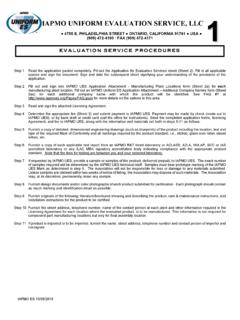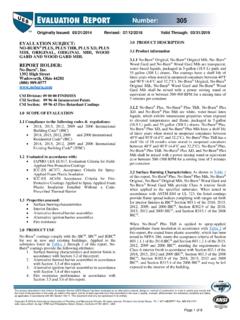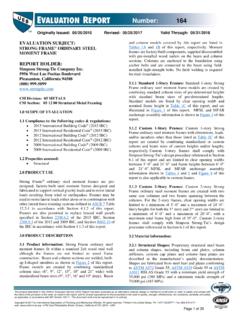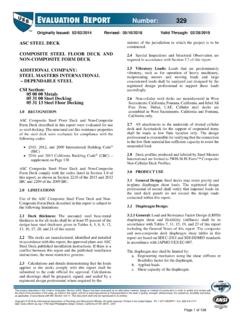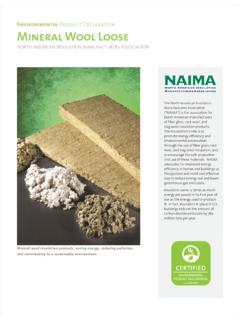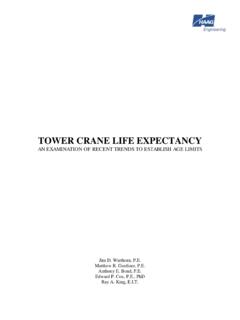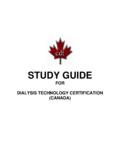Transcription of Number: 289 - iapmoes.org
1 number : 289 Originally Issued: 01/16/2015 Revised: 01/30/2020 Valid Through: 01/31/2021 The product described in this Uniform Evaluation Service (UES) Report has been evaluated as an alternative material, design or method of construction in order to satisfy and comply with the intent of the provision of the code, as noted in this report, and for at least equivalence to that prescribed in the code in quality, strength, effectiveness, fire resistance, durability and safely, as applicable, in accordance with IBC Section This document shall only be reproduced in its entirety. Copyright 2020 by International Association of Plumbing and Mechanical Officials. All rights reserved. Printed in the United States. Ph: 1-877-4 IESRPT Fax: web: 4755 East Philadelphia Street, Ontario, California 91761-2816 USA Page 1 of 8 SUPPORTWORKS, INC. 11850 VALLEY RIDGE DRIVE PAPILLION, NEBRASKA 68046 SUPPORTWORKS PP288 AND PP237 PUSH PIER SYSTEMS CSI Section: 31 62 00 Driven Piles RECOGNITION Supportworks, Inc.
2 Models PP288 and PP237 push pier systems recognized in this report have been evaluated for use as support foundations. The structural performance and geotechnical properties of the Supportworks, Inc. push pier systems comply with the intent of the provisions of the following codes and regulations: 2018, 2015, 2012 and 2009 International Building Code (IBC) LIMITATIONS Use of Models PP288 and PP237 push pier foundation systems recognized in this report is subject to the following limitations: The push pier foundation systems are manufactured, identified and installed in accordance with this report, approved construction documents (engineering drawings and specifications), and the manufacturer s published installation instructions. In case of conflicts, the more restrictive governs. The push pier foundation systems have been evaluated for support of structures assigned to Seismic Design Categories A, B, and C in accordance with IBC Section 1613.
3 Push pier foundation systems that support structures assigned to Seismic Design Category D, E or F, or are located in Site Class E or F, are outside the scope of this report. Installations of the push pier foundation systems are limited to regions of concrete members where analysis indicates no cracking occurs at service load levels or due to the effects of restrained shrinkage. The push pier brackets shall be used only to support structures that are laterally braced as defined in Section of the IBC. The push pier foundation systems have not been evaluated for use in soil conditions that are indicative of a potential pier deterioration or corrosion situation as defined by the following: (1) soil resistivity less than 1,000 ohm-cm; (2) soil pH less than ; (3) soils with high organic content; (4) soil sulfate concentrations greater than 1,000 ppm; (5) soils located in a landfill, or (6) soil containing mine waste.
4 Zinc-coated steel and bare steel components shall not be combined in the same system, except where the sacrificial thickness (Ts) for the zinc-coated components is taken as that given for bare steel components. All push pier foundation components shall be galvanically isolated from concrete reinforcing steel, building structural steel, or any other metal building components. The push pier shafts shall be installed at a maximum angle of from the vertical. Special inspection is provided in accordance with Section of this report. Engineering calculations and drawings, in accordance with recognized engineering principles, as described in IBC Section , prepared by a registered design professional, are provided to, and are approved by the code official. The adequacy of the concrete structures that are connected to the brackets shall be verified by a registered design professional, in accordance with applicable code provisions, such as Chapter 15 of ACI 318 and Chapter 18 of IBC, and subject to the approval of the code official.
5 A geotechnical investigation report for each project site shall be provided to the code official for approval in accordance with Section of this report. When using the alternative basic load combinations prescribed in IBC Section , the allowable stress increases permitted by material chapters of the IBC (including Chapter 18) or the referenced standards are prohibited. Evaluation of compliance with Section of the IBC for buildings assigned to Seismic Design Category C, and with Section of the IBC for all buildings, is outside the scope of this evaluation report. Such compliance shall be addressed by a registered design professional for each site, and the work of the design professional shall be subjected to approval of the code official. Settlement of push piers is beyond the scope of this evaluation report and shall be determined by a registered design professional as required in Section of the IBC.
6 number : 289 Originally Issued: 01/16/2015 Revised: 01/30/2020 Valid Through: 01/31/2021 Page 2 of 8 The Model PP288 push pier foundation system components are manufactured at the following facilities: Behlen Technology & Manufacturing Company, Omaha, Nebraska; Behlen Manufacturing Company, Columbus, Nebraska; PowerBrace, Des Moines, Iowa; and TSA Manufacturing, Omaha, Nebraska. The Model PP237 push pier foundation system components are manufactured at the following facilities: Behlen Technology & Manufacturing Company, Omaha, Nebraska; Behlen Manufacturing Company, Columbus, Nebraska; and TSA Manufacturing, Omaha, Nebraska. PRODUCT USE General: Supportworks, Inc. Models PP288 and PP237 push pier systems are used to support foundations of existing structures or to provide additional axial compression capacity to existing foundation systems. The systems are alternatives to driven piles described in IBC Section Design: Structural calculations (analysis and design) and drawings, prepared by a registered design professional, shall be approved by the code official for each project, and shall be based on accepted engineering principles as described in IBC Section , and shall conform to IBC Section 1810.
7 The design methods for the steel components are Allowable Strength Design (ASD), described in the IBC and AISC 360 Section The structural analysis shall consider all applicable internal forces due to applied loads, structural eccentricity and maximum span(s) between push pier foundations. The structural analysis, the IBC, and this report shall be used to select an appropriate push pier system. The ASD capacities of push pier system components are indicated in Table 2 of this report. The geotechnical investigation shall address the suitability of the push pier system for the specific project. The requirements for deep foundations in IBC Section shall be considered. In addition, effects on the supported foundation and structure and group effects on the pile-soil capacity shall be considered. The investigation shall provide estimates of the axial compression capacities for the push piers, and the expected total and differential settlements due to single pier or pier group, as applicable.
8 A written report of the geotechnical investigation shall be submitted to the code official as one of the required submittal documents, prescribed in IBC Section 107, at the time of the permit application. The geotechnical report shall comply with provisions in IBC Section and also include, but need not be limited to, the following information: 1. Information on groundwater table, frost depth and corrosion-related parameters, as described in Section of this report. 2. Soil properties, including those affecting the design such as support conditions for the piers. 3. Recommendations for design criteria. 4. Any questionable soil characteristics and special design provisions, as necessary. Bracket Capacity (P1): Only localized limit state of concrete bearing strength in compression has been evaluated in this evaluation report for compliance with IBC Chapter 19 and ACI 318. All other structural requirements in IBC Chapter 19 and ACI 318 applying to the concrete foundation, such as those limit states described in ACI 318 (anchorage per Appendix D, punching (two-way) shear, beam (one-way) shear, and flexural (bending) related limit states), have not been evaluated in this evaluation report.
9 The concrete foundation shall be designed and justified to the satisfaction of the code official with due consideration to structural detailing, applicable limit states, and the direction and eccentricity of applied loads, including reactions provided by the brackets, acting on the concrete foundation. Shaft Capacity (P2): The top of shafts shall be braced as prescribed in Section of the IBC. In accordance with Section of the IBC, any soil other than fluid soil shall be deemed to afford sufficient lateral support to prevent buckling of systems that are braced. When piers are standing in air, water or fluid soils, the unbraced length is defined as the length of piers that is standing in air, water or fluid soils plus an additional 5 feet (1524 mm) when embedded into firm soil or an additional 10 feet (3048 mm) when embedded into soft soil. Firm soils shall be defined as any soil with a Standard Penetration Test (SPT) blow count of five or greater.
10 Soft soil shall be defined as any soil with a SPT blow count greater than zero and less than five. Fluid soils shall be defined as any soil with a SPT blow count of zero [weight of hammer (WOH) or weight of rods (WOR)]. The SPT blow counts shall be determined in accordance with ASTM D1586. For fully braced conditions where the pier is installed in accordance with Section of the IBC, and piers do not stand in air, water, or fluid soils, the shaft capacities shall not exceed the ASD shaft compression capacities shown in Table 2 of this report. Shaft capacities of push pier foundation systems in air, water or fluid soils, shall be determined by a registered design professional. The elastic shortening/lengthening of the pier shaft will be controlled by the variation of applied loads from the pier lock-off load and the mechanical and geometrical properties of the 27/8- and 23/8-inch-diameter (73 mm and 60 mm) round structural tubing. The shaft elastic shortening may be determined from equation : shaft = P x LA x E (Eq.)
